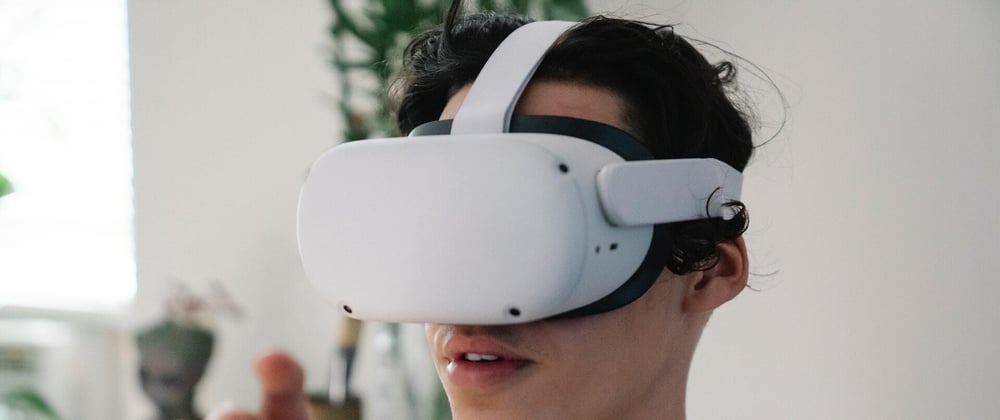Advancements in technology have allowed for tremendous improvements in communication and learning. The internet has allowed for vast amounts of information to be free and accessible to students and has made it possible for students across the world to interact with one another. In more recent times, companies such as Meta, Google, Apple, and Microsoft have been working to create a metaverse that will revolutionize how people interact and work together. A wide range of industries are expected to be enhanced by the metaverse but one industry, in particular, that would benefit is the education industry. One use of this new technology is to assist medical students as they study human anatomy and prepare for residency. Additionally, since the metaverse would reduce people’s need to travel it will be a useful tool to reduce carbon emissions and give students learning opportunities that traveling expenses would normally inhibit. Finally, the metaverse can be modified to meet the specific needs of children with learning disabilities.
Buying and maintaining cadavers is costly for medical schools and the recent Covid-19 pandemic has exacerbated this problem by causing a shortage of cadavers. While the metaverse is not likely to replace using cadavers, it can be a useful tool to enrich students’ study of human anatomy and allow students to practice procedures and bedside manners. For instance, when there is a shortage of cadavers schools could pay companies such as Carolina or Medicalholodeck for year-long subscriptions that would allow classes to meet in the metaverse to dissect a virtual cadaver. This subscription would also allow students to repeat the dissection on their own as they review the material. The metaverse can also benefit students by allowing them to see through layers of tissue in a fully intact body, which would not be possible in a real dissection. Additionally, it would make it possible for students to view dissections from all angles, which can be difficult for some organs from a real cadaver. An example of this would be axillary dissections, which medical students describe as one of the hardest dissections in medical school. Instructors can use the metaverse to highlight, change the color of, or emphasize specific structures. Furthermore, the virtual cadaver would in some ways be able to better represent a human body since the organs won’t be shriveled and discolored from the embalmment process. It is unlikely that the metaverse will completely replace the need for cadavers for two reasons. One is that size and distance within a simulation can be difficult to determine. Second, having the students study only one model will deprive them of observing and learning about anatomical abnormalities that they may see during their careers. Finally, the metaverse for education can be used to give first and second-year medical students an opportunity to practice procedures and improve their bedside manners in realistic settings. This extra practice can give students applying for residency an advantage and make it easier for them to transition from training in the classroom to working in clinical settings.
Secondly, the metaverse could be a useful tool for students with various learning disabilities. For example, the metaverse can be used to help students with ADHD learn the material because they are more likely to stay focused when learning becomes more interactive and competitive. Even students without learning disabilities will be able to benefit since engaging lectures and physical activity have been shown to improve students’ memory and recall. This can be accomplished by setting up the metaverse to resemble a game in which students receive points for answering practice problems and accomplishing various exercises while being able to see a live leaderboard. Students who have dyslexia or vision problems could benefit from using the metaverse by being able to change the settings to display a font that is easier to read. Since autistic children are especially sensitive to their environment teachers would be able to use the metaverse to create a learning atmosphere that would best put them at ease. Finally, the metaverse could also be used to help students who are struggling in the class by recording lectures and supplying students with practice problems to review the material covered in class.
Low-income families are expected to be affected the most by increasing gas prices caused by inflation, and fracking regulations. The metaverse is one tool that can be used toward reducing carbon emissions and helping low-income families cut their expenses by hundreds of dollars. Families are not likely to ever have to pay for the equipment or virtual subscriptions since many public schools already have financial plans in place to ensure that students have access to either computers or iPads for class. The schools would also benefit from moving the classroom to the metaverse since it will diminish the cost of maintaining school buses and facilities. However, the pandemic has shown that online learning has not improved students’ honesty, work ethic, and communication. For these reasons, improvements in the realness of avatars in the metaverse are unlikely to result in primary education being entirely through the metaverse. Another reason for this is the fact that interacting with real human beings is absolutely critical for children to develop social skills. Some schools may adopt a hybrid format in which students meet in the metaverse or meet at school for part of the week. For schools that choose to meet only in person, the metaverse can still reduce carbon emissions by giving students an opportunity to visit people and places across the world without the need for transportation.
Technology advancements have allowed students to access a vast amount of information and communicate with people from any place in the world. Metaverse development is creating and expanding new opportunities for many individuals and industries. The quality of education can be enhanced by designing the metaverse to meet the needs of students as they strive to understand and recall the information. This can be done in part by providing realistic simulations that students can repeat an unlimited number of times throughout the year. The metaverse will also create new opportunities for students to interact with people from around the world as if they were collaborating together in the same room. The metaverse will also help teachers better manage the classroom and optimize learning environments to meet each student’s individual needs. Finally, the environment will also benefit from people collaborating online as the technology will allow students to reduce carbon emissions and the cost of maintaining transportation. Overall, the metaverse will be an essential tool for engaging students and reducing carbon emissions.







Top comments (1)
Please use the listings for advertising posts like this, this is not a blog post. Thank you!